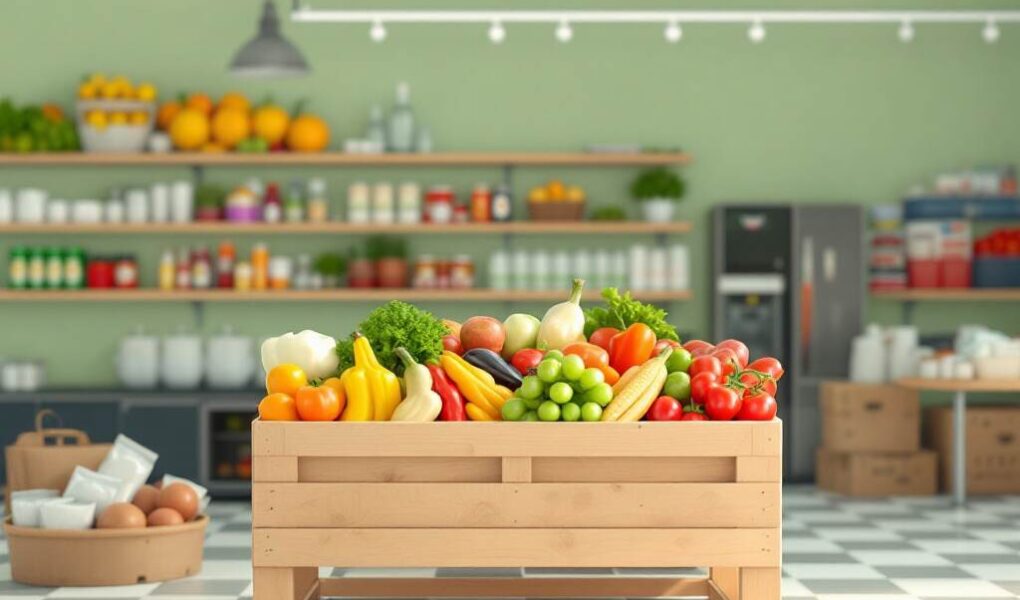Food storage is a crucial aspect of maintaining both safety and quality in our kitchens. Whether you’re a home cook or a professional chef, understanding how to store food properly can prevent spoilage and foodborne illnesses.
Understanding Food Storage Safety
Importance of Food Safety
Food safety is not just a buzzword; it’s a vital concern that affects everyone. Foodborne illnesses can lead to serious health issues, and understanding the risks involved is essential. According to the Centers for Disease Control and Prevention (CDC), one in six Americans gets sick from foodborne diseases each year. This staggering statistic highlights the importance of proper food handling and storage.
Food safety violations can occur in various forms, from improper cooking temperatures to inadequate storage practices. These violations can lead to contamination, which poses a significant risk to public health.
Factors Affecting Food Storage
Several factors influence how food should be stored:
- Temperature Control: Keeping food at the right temperature is crucial. Perishable items should be stored in the refrigerator or freezer to prevent bacterial growth.
- Humidity Levels: High humidity can lead to mold growth, while low humidity can cause food to dry out. Maintaining the right moisture is essential for food preservation.
- Pest Control: Pests like rodents and insects can contaminate food. Proper storage height can help minimize the risk of pest infestations.
Recommended Distance for Food Storage

General Guidelines
Health organizations like the FDA and USDA provide guidelines for food storage. One of the key recommendations is that food should be stored at least 6 inches off the floor. This distance helps prevent contamination from dirt, spills, and pests.
Storage TypeRecommended Height
Dry Goods At least 6 inches
Refrigerated Items At least 6 inches
Frozen Foods At least 6 inches
Variations by Food Type
Different types of food have specific storage requirements:
- Dry Goods: Items like rice, pasta, and canned goods should be stored on shelves that are at least 6 inches above the floor to avoid moisture and pests.
- Perishable Items: Foods that require refrigeration, such as dairy and meats, should also follow the 6-inch rule. However, they should be stored in a way that allows for proper airflow to maintain freshness.
Benefits of Proper Height Storage
Preventing Contamination
Storing food at the recommended height significantly reduces the risk of contamination. When food is kept off the floor, it is less likely to come into contact with dirt, spills, or pests. This simple practice can make a big difference in food safety.
Enhancing Airflow
Proper height storage also enhances airflow around food items. Good airflow is essential for maintaining food quality, especially for perishable items. It helps prevent moisture buildup, which can lead to spoilage.
Compliance with Regulations
Many local health codes require food to be stored at a certain height. By adhering to these regulations, you not only ensure safety but also avoid potential fines or penalties. Compliance is critical in both home and commercial kitchens.
Practical Tips for Storing Food at the Right Height
Shelving Solutions
Choosing the proper shelving can make a significant difference in your food storage practices. Here are some common types of shelving:
- Metal Shelving: Durable and easy to clean, metal shelves are ideal for commercial kitchens.
- Plastic Shelving: Lightweight and resistant to moisture, plastic shelves are great for home use.
Organizing Your Storage Space
Maximizing your storage space while adhering to height guidelines is essential. Here are some best practices:
- Use Clear Containers: Clear containers help you see what you have at a glance, making it easier to keep track of your food.
- Label Everything: Labeling containers with expiration dates can help you manage your inventory effectively.
Regular Monitoring and Maintenance
Regularly checking your storage conditions is vital. Make it a habit to inspect your food storage areas for any signs of spoilage or pest activity. This proactive approach can save you from potential health risks.
Common Mistakes to Avoid
Storing Directly on the Floor
One of the most common mistakes is storing food directly on the floor. This practice can lead to contamination and spoilage. Always ensure that your food is elevated to the recommended height.
Ignoring Local Regulations
Ignoring local health regulations can have serious consequences. Not only can it lead to fines, but it can also jeopardize the safety of your food. Stay informed about your local guidelines to ensure compliance.
Frequently Asked Questions (FAQ)
What is the minimum height for storing food?
The minimum height for storing food is 6 inches above the floor. This distance helps prevent contamination and ensures food safety.
Why is it essential to store food off the floor?
Storing food off the floor minimizes the risk of contamination from dirt, spills, and pests. It also helps maintain proper airflow, which is essential for food quality.
Can I store food in basements or garages?
Yes, you can store food in basements or garages, but it’s essential to ensure that these areas are clean, dry, and pest-free. Additionally, make sure that food is stored at the recommended height.
Conclusion
In summary, understanding the proper distance for food storage above the floor is crucial for maintaining food safety and quality. By following the recommended guidelines, you can prevent contamination, enhance airflow, and comply with local regulations.
Now is the time to assess your own food storage practices. Are you storing your food at the right height? Make the necessary adjustments to ensure that your food remains safe and fresh.




